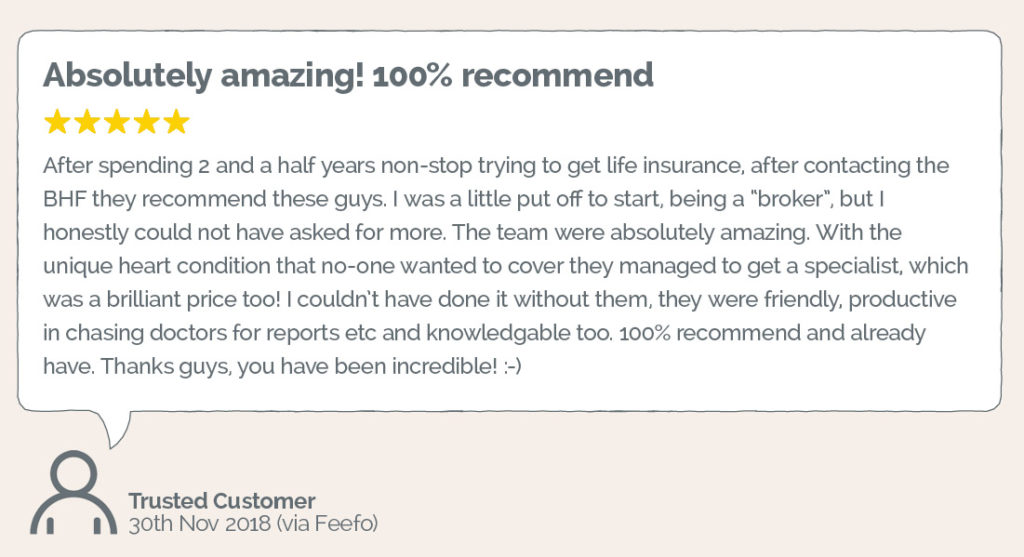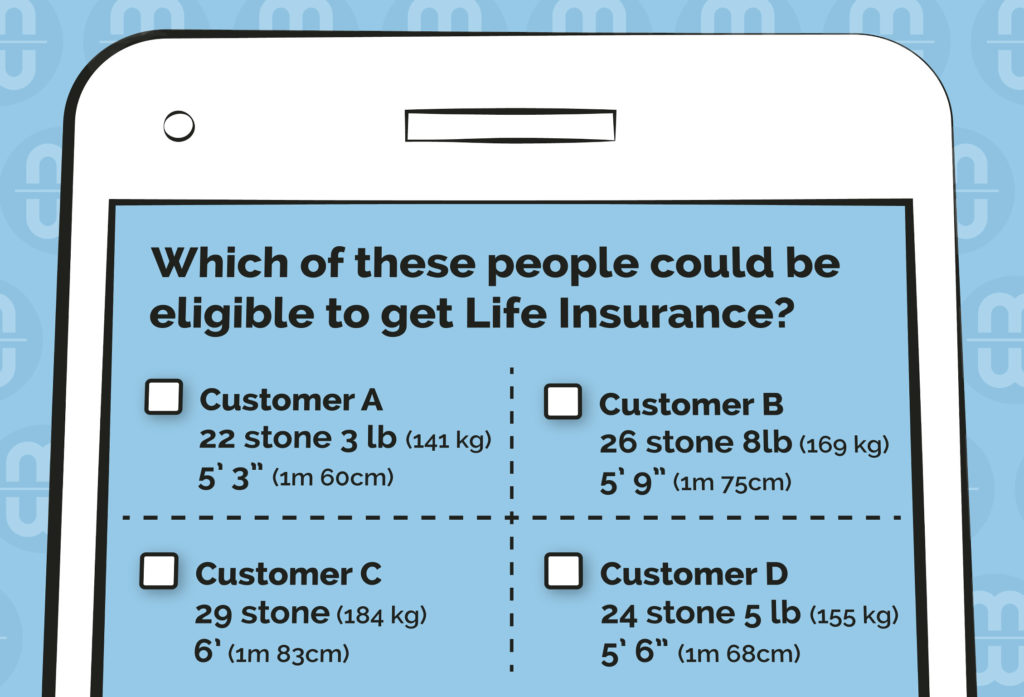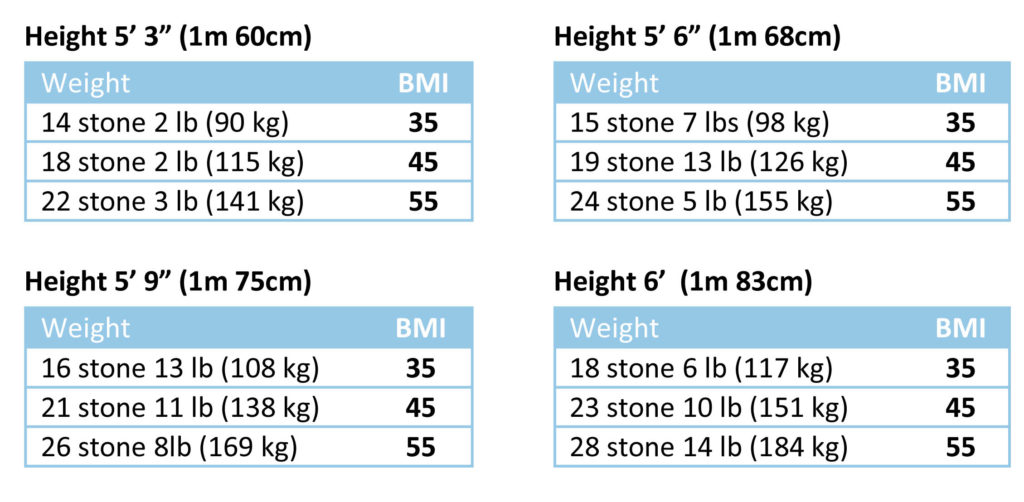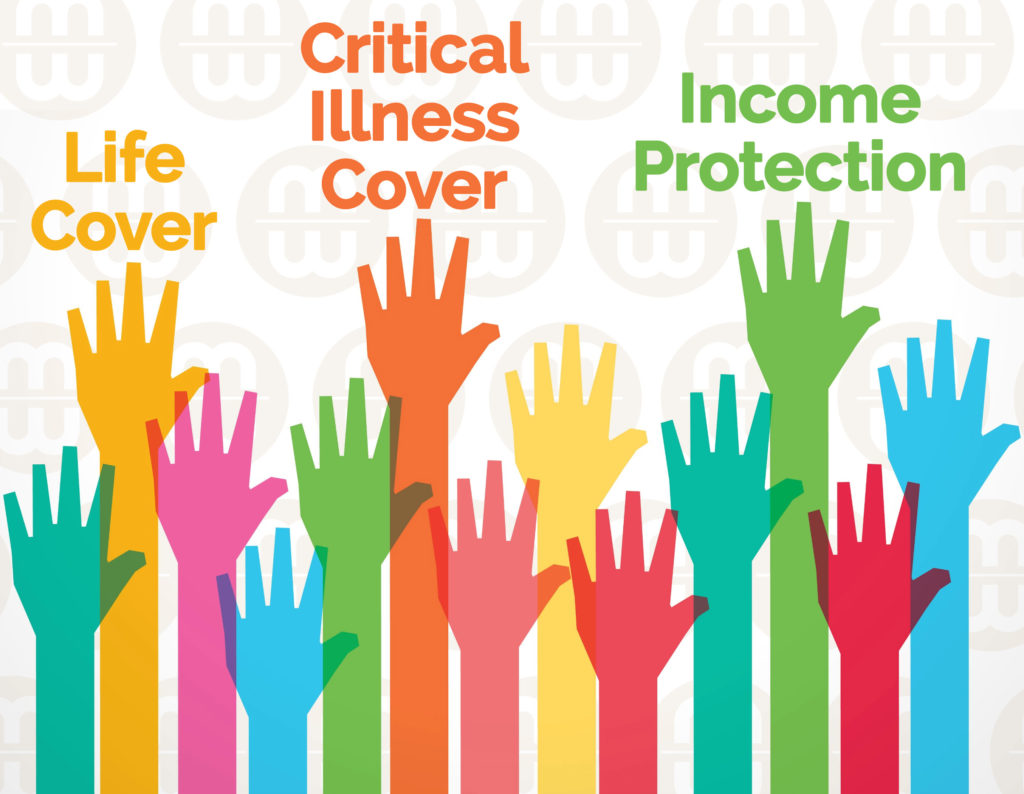Moneysworth wins Best Small Protection Advice Firm 2023!
Learn more
Call us 01625 462 744

Here at Moneysworth, we’re big fans of signposting. What do we mean by that?
For an insurance provider, it’s about considering consumers’ needs – even if that insurer cannot accommodate the special needs that an increasing number of consumers have.
For example, what happens when a consumer is shopping around for life insurance and they are refused cover because they have a health condition which makes them a higher risk for insurance? This can, often incorrectly, cause consumers to think that they’re uninsurable and to give up looking for cover.
Consumers with health conditions rely on charities for information and guidance to help them overcome the complexities they face, including the difficulties of searching for suitable insurance cover.
The British Heart Foundation (BHF) is the UK’s leading charity for funding research into heart and circulatory diseases and their risk factors. For several years, Moneysworth and other specialist brokers have been listed [1] on the BHF’s website or in its guidance publications. We don’t always know how people find us, but we do know from our conversations with clients that many people come to us after contacting the British Heart Foundation. This is signposting in action!
The review shown at the top of this article was written by a male client in his late twenties who was determined to protect his family’s financial future.
The problem was that, because of his heart condition, he couldn’t find an insurer who would offer him Life Cover. Soon after being born, he’d been diagnosed with a bicuspid aortic valve and coarctation of the aorta. When he was a teenager, he had open heart surgery, followed by a week in hospital and six months recuperation before returning to school.
Ever since then, he’s had annual checks at a hospital, but has no symptoms and doesn’t even need to take medication. He has no other health issues and no family history of heart defects or heart disease. He is able to work in a physical role and has an active lifestyle. Indeed, the reason he has a mortgage is because he has a steady job and income!
Yet every insurer he contacted declined to offer him Life Cover because of his medical history of having a rare heart condition.
After years of unsuccessfully searching for an insurer who would offer him suitable cover, he was signposted to Moneysworth via the British Heart Foundation.
With our specialist knowledge of the insurance market, combined with our medical knowledge, we were able to help the client find the cover he needed to protect his family’s financial future. He successfully applied for and started a Decreasing Life Insurance policy for almost £400,000 to cover a repayment mortgage over 35 years, for just under £50 per month.
Thanks to the British Heart Foundation making the effort to provide appropriate guidance and signposting, many people with heart conditions are able to find Life Cover after they’ve been declined by mainstream insurers.
Notes:

This February is National Heart Month, a time for each of us to reflect on how we can improve the health of our heart. Living with a heart condition can affect not only the individual but their loved ones too.
Having a heart condition has become one of the most common medical problems among clients who ask us to help them find Life Cover.
Source: British Heart Foundation statistics
Finding Life Insurance that suits your needs can be much harder if you’ve had a heart attack, a cardiac arrest or are living with a heart condition. Moneysworth specialise in helping people find Life Cover even if they have a health condition or have been refused life cover elsewhere.
The most common heart condition we see in our work is a previous heart attack (also known as myocardial infarction). However, over the last seven months, we’ve helped over ninety people with a wide variety of other heart conditions to find life cover. Many of these clients have now successfully started their policy or are currently in the process of applying for cover.
Over the next few weeks, we’re going to post a series of articles about the circumstances behind some of our clients’ search for life cover: why they needed life insurance, the problems they’d previously encountered when trying to apply for cover elsewhere, and the policy options and prices we were able to obtain for them.
It may surprise you to see how people who are living with a serious heart condition – or even multiple conditions – are still able to find cover, thanks to our team’s expert guidance and assistance.

This week is National Obesity Awareness Week – a time to reflect on how being overweight can affect health, how to eat more healthily, and to consider being more physically active.
The risk of developing weight-related health issues is why Life Insurance companies need to know your BMI (body mass index) – a measure that uses your height and weight to work out if your weight is healthy.
Well, it does usually mean the price of the insurance is higher compared to someone with a healthy weight and no other health problems. But you may be surprised to learn that, even with a very high BMI, it’s still possible to get Life Insurance.
The answer is ALL of them!
Each of the four people has a BMI of 55, which health professionals consider to be in the very high range of obesity levels.
Different insurers set different maximum BMI limits. So, even though these four people have a high BMI, some insurers may offer them Life Cover. That decision, and the price offered, will of course depend on other factors too, such as the applicant’s age, other health conditions and any relevant family medical history.
Here’s a range of examples of BMI (Body Mass Index) for adults, who have different heights and weights:

If you know your height and weight, you can use the NHS’s Healthy Weight Calculator to find out your BMI.
Even if you’re still in your 20s or 30s, you feel healthy and high BMI is your only medical issue, you may be charged more for your insurance cover.
This is because insurers don’t just consider your present state of health – they also assess the effect of the raised BMI throughout the proposed term (length) of the insurance cover that you’re asking for.
Recently, we’ve found some insurers who will offer to reduce the monthly cost for your life cover if your BMI improves due to weight loss.
Critical Illness cover and Income Protection cover are typically harder to obtain for people with a high BMI, especially if there are other health conditions to consider. But it may be still be possible for some people – it all comes down to your overall circumstances: BMI, age, other health conditions, family medical history, etc.
Most mainstream insurance companies will have a tolerance level for BMIs up to around 40-45, providing there are no other health conditions present.
If you have other healths conditions too, or have a BMI higher than the mid forties, your search for cover is mostly likely going to be harder.
This is why asking an expert to shop around for you is a good idea. Moneysworth have over fifteen years of success in finding life insurance for people with high BMI and other health conditions. We are usually able to obtain life cover for a maximum of BMI of 55, and in some cases even up to 60. We don’t charge clients any fees to search the insurance market, so it won’t cost you a penny to ask us to fully explore your Life Insurance options.
Learn more about Life Insurance and high BMI / Obesity.

Having type 1 or type 2 diabetes often makes it harder or even impossible to find suitable Life Cover, Critical Illness Cover and Income Protection.
Life insurance companies typically have a range of different premium rates for people with diabetes. Different companies will place the same person in different price bands. The process of applying for cover can often take weeks – or even months – if medical reports need to be obtained and checked. And although the situation has somewhat improved for Life Cover in recent years, most insurers are still unwilling to consider Critical Illness or Income Protection for people with any type of diabetes.
Well, there’s definitely some good news here.
In recent years, we’ve seen improvements in the prices for Life Cover typically offered to people with diabetes.
Another encouraging development we’ve seen with a couple of insurers: after starting the life insurance policy, the insurers reward policyholders by reducing premiums if the customer can demonstrate improved control (i.e. if their HbA1c reading comes down by a certain amount). We think this is a very encouraging sign, not just because it can make cover cheaper, but because it demonstrates that the insurance market is starting to consider how to adapt to the unique circumstances of people with long-term health conditions.
If certain criteria are met, it’s now possible for people living with diabetes to get a “fast-track” application, which means cover could be in place immediately. Less stress, more peace of mind – exactly the kind of innovation we want to see for people with long-term health conditions who want to protect their financial security and their family’s future.
A year ago, there were hardly any options for people with diabetes to obtain Income Protection Insurance. For most it simply wasn’t available.
Moneysworth campaigned to improve that situation, and we’re pleased to see at least some people in the insurance industry listened to us!
With expert guidance, it’s now possible for some people who have type 2 diabetes to get Income Protection with no exclusions, subject to certain criteria. But for people with type 1 diabetes, although there is some availability, it’s extremely limited.
The situation for Critical Illness Cover has been slow to improve. It is now possible for people living with diabetes to obtain Critical Illness Cover – but the options are very limited and the chances of being offered cover are even narrower if they have type 1.
The small signs of progress we’ve seen in the market are a welcome start, but the fact is most insurance companies still don’t offer either of these protection products to people who have diabetes.
The charity Diabetes UK reports that there are around 3.7 million people who have been diagnosed with diabetes in the UK, and that figure is predicted to rise to 5 million by 2025*.
In light of this, we firmly believe that the insurance market needs a surge of innovation to make its products and services more forward-thinking and inclusive.
Moneysworth wants to see cover options and availability broaden for people living with diabetes, and so we’ll continue to lobby the insurance industry.
* Source: Diabetes UK ‘Facts & Figures‘
We’ll be heading to London this week for the prestigious Health Insurance Intermediary Awards where we’re finalists in two categories.
We’ve made the shortlist in the following categories:
As an intermediary specialising in helping those who may be considered high risk for insurance, we’re delighted to feature in these shortlists against some great competition.
The awards will be taking place at London’s Grosvenor House on Thursday 15th October 2015 with over 900 industry professionals and experts expected to be there.
Wish us luck!
Obtaining Critical Illness cover for anyone with Type 2 Diabetes can be very difficult, but it is possible in some circumstances, as one of our recent cases demonstrates.
The first problem is that most insurance companies will automatically decline any application for Critical Illness cover from a person with Type 2 diabetes, irrespective of positive factors, such as good control and lack of complications. So it’s difficult for consumers to know where to go.
Normally buying life insurance and critical illness cover can be done in many places like the bank, large comparison websites and financial advisers, however if your personal circumstances mean that you do not fit the standard mould, you would be well advised to use the services of a life insurance broker who has particular specialisation in dealing with people who have health conditions.
Moneysworth has been successful in arranging Life and Critical Illness cover on a number of occasions for people with Type 2 Diabetes, as a recent case demonstrates.
A gentleman in his early 40’s made an enquiry on our website: www.moneysworth.co.uk. Type 2 Diabetes had relatively recently been diagnosed, his control was good and he didn’t have any diabetic complications, but he was overweight. With a raised BMI (Body Mass Index) of 31, this made finding cover even more difficult. He wanted Life and Critical Illness cover and had a specific budget in mind for his premiums of £75 per month.
As we do in all cases, we researched the whole market for the client to see if life and critical illness cover would be available. Our research indicated that only one insurance company would offer him cover, so we applied to them. The insurer wrote to his GP surgery for further medical information and on receipt of that offered a guaranteed premium policy for £75 per month, covering the client for Level Life or Critical Illness cover (without exclusions) of £75,350 over 23 years.
People with an existing health condition who have been declined elsewhere should not give up hope of getting the cover they want until they have used the services of a specialist life insurance broker. If a client wants to find out what might be available and apply, Moneysworth do not charge a fee. This means Moneysworth is only paid a commission by an insurer if we are successful. Remember if you’re unsure if a broker is a specialist, you could ask the question: ‘What percentage of your clients have pre-existing health conditions?’. At Moneysworth that figure is over 75%!